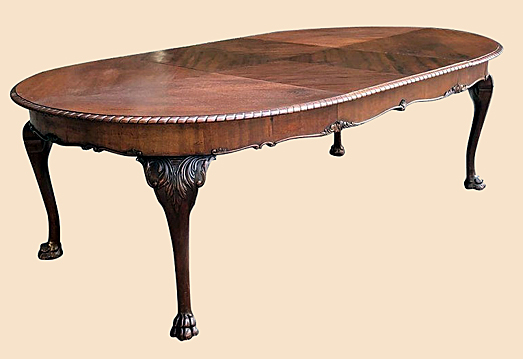 QUESTION: I’m a watch repair person. Recently, a rather unique 24-hour watch came across my counter for a new band. I’ve never seen one like it before and wandered if you could tell me more about it. The dial has what looks like a map of Antarctica on it and all the lettering seems to be in the Russian Cyrillic alphabet. Also, the dial has some writing in red on it.
QUESTION: I’m a watch repair person. Recently, a rather unique 24-hour watch came across my counter for a new band. I’ve never seen one like it before and wandered if you could tell me more about it. The dial has what looks like a map of Antarctica on it and all the lettering seems to be in the Russian Cyrillic alphabet. Also, the dial has some writing in red on it.
ANSWER: What you have is what’s known as Russian Raketa Polar Watch. They’re often described as Raketa watches.
The Petrodvorets Watch Factory, the one that produces Raketa watches, is the oldest in Russia, founded by Peter the Great in 1721. The Nazis destroyed it during the Siege of Leningrad, but the Soviets rebuilt it in 1944. Since 1961, the factory has been producing watches under the brand “Raketa,” meaning “rocket,” in honor of Yuri Gagarin, Russia’s first astronaut and the first person in Space.
 Today, the Petrodvorets Watch Factory, still located in its historic building, is one of the rare watch factories in the world that makes its own movements, including the hair spring, balance wheel, and escapement. In 2009, the company modernized its production with equipment purchased from the Swatch Group in Switzerland.
Today, the Petrodvorets Watch Factory, still located in its historic building, is one of the rare watch factories in the world that makes its own movements, including the hair spring, balance wheel, and escapement. In 2009, the company modernized its production with equipment purchased from the Swatch Group in Switzerland.
Often these watches don’t look like Petrodvorets produced them. However, they were often assembled from Raketa parts—probably everything except the dial. Most of the online auction listings say they were "handmade" in Russia. And, for the most part, that’s true. But being part of "Old stock" refers more to the parts than to the complete watch.
In the 1950s and 1960s, it was common for smaller workshops to produce these watches using Raketa parts. Different Polar, Arctic, and Antarctic models originated from this time. These “fakes” were essentially assembled from whatever parts the makers could find. Supposedly Petrodvorets’ workers during the Soviet Era would produce Raketa watches with modified dials on their own after hours. This continued until 2009, when new owners took over the company.
 The majority of Raketa watches were actually produced in the original Petrodvorets factory by original Raketa masters using original Raketa parts. What they modified, if needed, was the dial. These Raketa masters had the tools and knowledge to produce special dial watches.
The majority of Raketa watches were actually produced in the original Petrodvorets factory by original Raketa masters using original Raketa parts. What they modified, if needed, was the dial. These Raketa masters had the tools and knowledge to produce special dial watches.
This watch is one of those special dial watches. It commemorates the first Soviet research expedition to Antarctica in 1956. But must have been produced after the fact since Yuri Gagarin didn’t go into space until April 12, 1961, if in fact it is a Raketa watch.
Russian explorers Fabian Gottlieb von Bellingshausen and Mikhail Lazarev, sailing on the ships Vostok and Mirny, first sighted a continental ice shelf in Antarctica in 1820. The continent, however, remained largely neglected for the rest of the 19th century because of its hostile environment, lack of resources, and isolation.
 The first Soviet contact with Antarctica came in January 1947 when the Slava whaling flotilla began whaling in Antarctic waters. But it wasn’t until The Soviet Antarctic Expedition, or Sovyetskaya Antarkticheskaya Ekspeditziya, part of the Arctic and Antarctic Research Institute of the Soviet Committee on Antarctic Research of the Academy of Sciences of the USSR, that the Russians explored the interior of the continent to the South Pole.
The first Soviet contact with Antarctica came in January 1947 when the Slava whaling flotilla began whaling in Antarctic waters. But it wasn’t until The Soviet Antarctic Expedition, or Sovyetskaya Antarkticheskaya Ekspeditziya, part of the Arctic and Antarctic Research Institute of the Soviet Committee on Antarctic Research of the Academy of Sciences of the USSR, that the Russians explored the interior of the continent to the South Pole.
The Soviets established their first Antarctic research station, Mirny, near the coast on February 13, 1956. In December 1957, they built another station, Vostok, inland near the south geomagnetic pole. The Fourth Soviet Antarctic Expedition used three large tractors and four sledges on the journey from Vostok to the South Pole, and it’s this expedition that this watch commemorates. The words in red on the dial state “The Soviet Antarctic Expedition,” or “Sovyetskaya Antarkticheskaya Ekspeditziya” in Russian.
In 1959, twelve countries signed the Antarctic Treaty, prohibiting military activities and mineral mining, prohibits nuclear explosions and nuclear waste disposal, supports scientific research, and protects the continent's ecozone. As of today, forty-nine nations have signed the treaty. More than 4,000 scientists from many nations now conduct ongoing experiments in Antarctic life and climate change.
To read more articles on antiques, please visit the Antiques Articles section of my Web site. And to stay up to the minute on antiques and collectibles, please join the over 30,000 readers by following my free online magazine, #TheAntiquesAlmanac. Learn more about "The Sparkling World of Glass" in the 2021 Winter Edition, online now. And to read daily posts about unique objects from the past and their histories, like the #Antiques and More Collection on Facebook.

















































